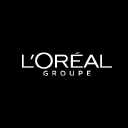Beauty giants, L’Oreal (OTCMKTS: LRLCY) and Estee Lauder (NYSE: EL) both posted robust quarterly performances in the recent past. One of the key drivers for their growth was the demand for their products in Asia and more specifically in China. China is emerging as one of the most important markets that the leading global beauty companies are depending on for their future growth. However, some recent trends suggest that China might not be such an attractive market for these beauty giants as it was before. Recent studies show that domestic beauty products are becoming increasingly popular than those produced by the international names, leading to the question whether these beauty giants can depend on Asia and China in the future. We have a $43 price estimate for L’Oreal’s stock, which is slightly lower than the current market price.
Consumer Preference Towards Foreign Brands Is Witnessing A Declining Trend
Starting from fast food companies to beverages, from cigarettes to cosmetics, Asia has always been a coveted market for multinational companies on account of its rising purchasing powers with growing jobs and due to the lack of strong competition by local players. China Market Research Group had released a survey that demonstrated that almost 85% of Chinese consumers prefer brands from abroad. However, the trend is reversing and the preference has dropped by half in 2016. The reversal is not restricted to China alone and it has also been witnessed in other emerging markets such as India and Vietnam.
What Are The Secrets Behind The Rise Of Local Brands?
The most obvious reason for local brands to prosper is their understanding of the consumer’s pulse in the domestic market. These local brands know better about the trends prevailing in the local markets and hence they take advantage of the same to build their competitive advantage. Consumers also claim that they trust the ingredients used by the local brands to be safer for their skins etc. rather than those of the foreign brands where they’re unsure about the ingredients used. A recently released study by Nielsen showed how local brands sales are surpassing those of foreign brands in the Asian and Latin American markets.
The packaging and quality of the local products have also witnessed dramatic improvements over the last few years, and add to it their penchant for knowing the right digital and offline marketing tools to reach the customers, and there we have the reasons for their success. For example, in China the Pechoin moisturizers are selling like hotcakes and they might prove to be a major threat to companies like L’Oreal. China’s skincare market is expected to grow by 25% to around $34 billion by 2021 and hence, losing out on such a market might be a major setback for the global beauty leaders.
How L’Oreal’s Market Share In China Is Being Eaten By Local Brands
L’Oreal is currently the top beauty group in China. The growing demand for premium cosmetics among the Chinese customers is the reason why L’Oreal and Estee Lauder are so successful in the country. In fact, L’Oreal had also realized in the past how domestic brands are important to grow the company in China and towards that end it acquired the Chinese skincare brand, Magic Holdings, in 2014.
However, local brands like Pechoin are growing in leaps and bounds, five fold according to Euromonitor, between 2012 to 2016. Unfortunately for L’Oreal, the company lost over a fifth of its market share over the same period. Pechoin delivered revenues to the tune of $1 billion last year.
Pechoin uses Asian pop singers, icons for the millennial beauty users, as its brand ambassadors. It sponsors popular television series, uses popular chat messaging apps for marketing purposes. In short, it connects with the domestic populace through the specific cultural and social bonds, something that the foreign brands might not be well versed in.
The Road Ahead For Global Players
The road ahead might be a difficult one for global beauty brands. Markets like North America and Western Europe do not provide huge hopes. The decline in foot traffic in North American brick and mortar stores is one of the biggest reasons why sales for Estee Lauder had been suffering in the past. L’Oreal, too, had been adversely impacted by declining sales in the U.S. in the past. Hence, under these scenarios emerging markets are the only hopes for the global players. Will the future see more acquisition of local brands by these players or will the beauty giants apply some other strategy to lure the local customers in emerging markets, is something that we have to wait and see.
Editor’s Note: We care deeply about your inputs, and want to ensure our content is increasingly more useful to you. Please let us know what/why you liked or disliked in this article, and importantly, alternative analyses you want to see. Drop us a line at content@trefis.com
Notes:
1) The purpose of these analyses is to help readers focus on a few important things. We hope such communication sparks thinking, and encourages readers to comment and ask questions on the comment section, or email content@trefis.com
2) Figures mentioned are approximate values to help our readers remember the key concepts more intuitively. For precise figures, please refer to
our complete analysis for L’Oreal

